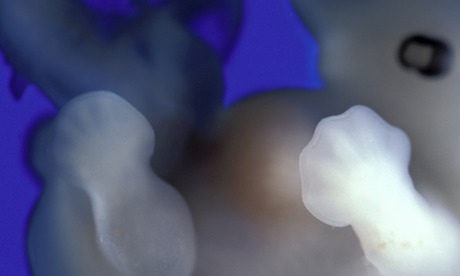
Human embryo at forty days. Photograph: Carolina Biological/Corbis
Later on this year, parliament is anticipated to debate a alter to the law that would let a reproductive treatment named mitochondrial substitute (MR) into fertility clinics. A current review of proof by the United kingdom fertility regulator, the Human Fertilisation and Embryology Authority, stated that this experimental strategy is “not unsafe”. But although the aim of the process is noble – to eliminate human mitochondrial ailments, which have an effect on around 1 in four,000 men and women – a amount of essential safety issues continue to be unresolved.
Evolutionary concept predicts a mismatch in between the DNA in the donor’s mitochondria and the mother’s nuclear DNA, with potentially serious and unpredictable consequences for any embryo designed utilizing MR, an concern my colleagues and I wrote about last 12 months. When MR is carried out experimentally, it has been proven to alter the metabolic process and cognitive capacity of mice. In other species it benefits in male sterility, diminished survival, accelerated ageing and modifications the expression of numerous hundreds of genes. But there is a lack of data from species a lot more closely connected to humans – a gap in our information that we felt would be sensible to fill before proceeding to clinical trials.
The issue of mismatching arises due to the fact of the peculiar way mitochondrial DNA (mtDNA) is inherited through mothers only, offering an possibility every generation for the mtDNA and some of her nuclear DNA to be passed on collectively. This allows organic assortment, nature’s good quality control mechanism, to weed out combinations of interacting mitochondrial and nuclear DNA that are not compatible with a single one more. Over prolonged evolutionary timescales within populations, the two genomes will become matched or “coadapted” to one yet another. MR breaks these coadapted genomes apart, providing rise to a range of damaging results. The particular style of the experiments needed to detect mismatching is particularly essential. They normally involve manipulating a number of distinct mitochondrial types and creating observations in many people. With no these attributes the capacity to detect mismatching is bad. So whilst demonstrations that MR is technically feasible (with the production of four macaques in 2009), it is not ample to rule out the probability that the types of effects seen in other species will not be located in primates or people.
The HFEA appear unconvinced that the coevolutionary process for which there is evidence is true, contemplating “this kind of hypothetical issues to be extremely unlikely”.
The report, passed to the Department of Health on the 2 June 2014, discusses a number of other technical issues connected to the security of the technique, and even outlines a quantity of areas for which far more data is essential. But for the issue of mismatching, they do not advise any more study. This is regarding, as it appears a realistic security concern is getting ignored.
From my perspective as an evolutionary biologist, a frequent thread in the debate so far is that people are somehow particular circumstances, despite the reality that the same set of mitochondrial genes are found from yeast to humans, and that the evolutionary theory is a general one, applying even to plants. This suggests to me that greater exposure to and integration of current evolutionary ideas in the training of biomedical scientists would be beneficial. This is not a new suggestion a whole discipline called Darwinian medication is gradually gaining traction, with the aim of providing health care professionals the capacity to far better predict ailment threat.
It also appears that if evolutionary biologists were incorporated earlier in the consultation procedure, there may have been far more cautious conclusions about the security of MR. The inertia behind the regulatory procedure, collectively with the resistance from biomedical researchers to contemplate evolutionary arguments, is substantial. I propose that in the long term policy makers would do effectively to cast a broader net when searching for experience and evolutionary biologists themselves ought to engage much more with policy makers.
Scientists are usually urged to grow to be more concerned in building proof-primarily based policy, and so it is relatively perplexing to see that when concept and proof are presented they are roundly dismissed as irrelevant or trivial. Evolutionary biology can offer you a excellent deal of understanding about the planet around us, such as ourselves. We need to make use of that expertise.
• Ted Morrow is an evolutionary biologist at the University of Sussex
Safety worries continue to be above three-man or woman IVF | Ted Morrow
Hiç yorum yok:
Yorum Gönder